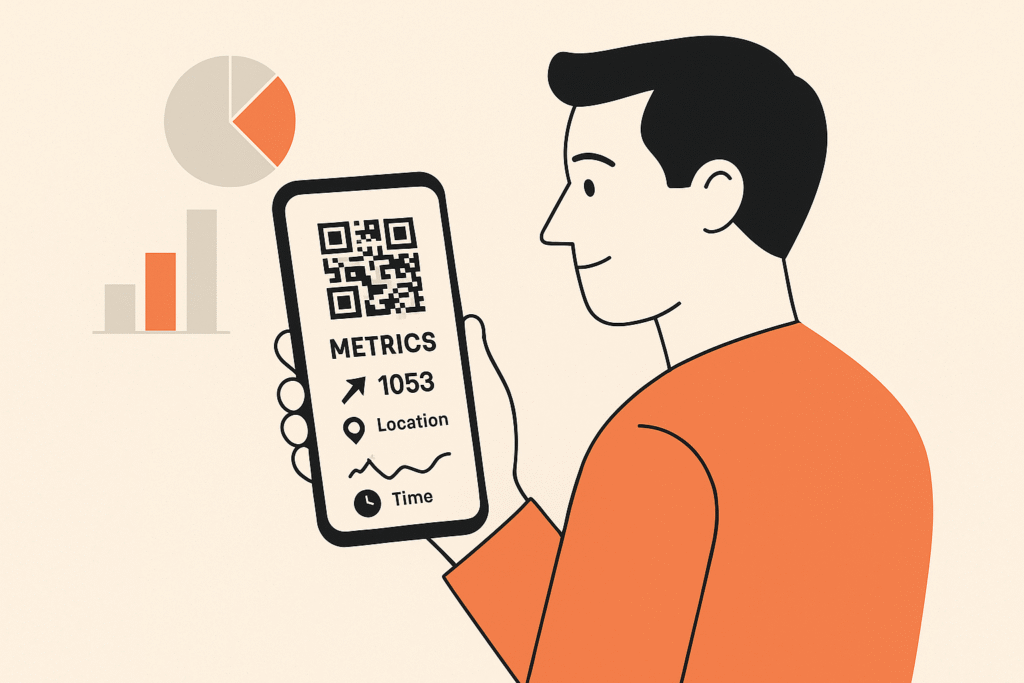QR code tracking is no longer a technical detail. It has become the centerpiece of any serious campaign. In a marketing world increasingly driven by data, measuring the performance of each scan is what separates curiosity from conversion and "likes" from real results.
Brands, events, influencers, and small businesses have already understood that QR codes are not just shortcuts. When you track properly, they become an analytics layer that shows who engaged, when, where, and what happened next.
What Real QR Code Tracking Means

QR code tracking means monitoring everything that happens from each code created. Who scanned, in which city, at what time, on which device, and whether that attention turned into a signup, visit, or sale.
In practice, it is not just counting how many scans occurred. Proper tracking lets you see access locations to understand where the campaign really performed, time and frequency to discover the best engagement moments, device type such as Android, iOS, or desktop to adjust the experience, and conversion rate to know how many scans became clicks, signups, or purchases.
With this, QR code tracking stops being "nice to have" and becomes the foundation for validating strategy, adjusting creatives, choosing channels, and proving media ROI.
Metrics That Matter in QR Code Tracking
Just like digital campaigns, QR code tracking offers a complete panel of indicators.
Engagement Volume
This is the total number of scans. It shows how much your piece grabbed attention and whether the offer was strong enough to stimulate the scan.
Geographic Location
Reveals which neighborhoods, cities, or regions your campaign performs best in. This helps direct media and local actions where interest is real.
Peak Hours
Shows which days and time slots the audience is most active. Perfect for aligning campaign launches, social reinforcements, and flash promotions.
Device and Operating System
Understanding whether scans come more from Android, iOS, or desktop helps adjust pages, video formats, payment methods, and even messaging.
Conversion Rate
This is the proportion of scans that generated a concrete action. It could be signup, download, contact submission, or purchase. Without this metric, you are only measuring curiosity, not results.
Retention Time
In some flows, you can see how long the person stayed on the page or journey after the scan. Very short time indicates a weak offer or confusing experience.
When these metrics work together, the QR code stops being a "black and white square" and becomes a market intelligence tool.
QR Code Tracking in Practice
The same concept adapts to completely different sectors, from retail to large events.
Physical and Digital Marketing Campaigns
Billboards, posters, flyers, and videos with tracked QR codes allow measuring, in real time, which pieces bring more visits, signups, and sales. You can see offline media ROI as if it were a digital ad.
Events and Trade Shows
Organizers use QR codes for check-in, access to exclusive content, raffles, and quick surveys. With active tracking, you can know which talks engaged most, which booths attracted more people, and how to follow up on the relationship afterward.
Product Packaging
Food, beverage, and consumer goods industries place QR codes on packaging to unlock recipes, manuals, loyalty programs, or reviews. Tracking shows which regions the product moves most in and which campaigns drive repeat purchases.
Digital Influencers
Each creator receives an exclusive QR. This way, the brand clearly sees how many scans, signups, and sales each partner generated. No more discussing performance based on "estimated reach."
According to HubSpot's State of Marketing, companies that use tracking data to optimize campaigns increase media efficiency by up to 30% by adjusting creatives, channels, and audience in near real time.
See Every Scan Become Insight in Real Time
With VISU, you get complete QR code tracking. Location, time, device, conversion, and campaign performance in a single dashboard.
Advanced Analytics: Using Data to Adjust Campaigns
The real value of tracking lies in how you react to data, not just looking at a pretty dashboard.
A/B Testing with QR Codes
You can create two QR codes that lead to the same destination but on different pieces. For example, two posters with distinct creatives. Tracking shows which version generates more scans and conversions and avoids guesswork in design.
Channel Comparison
One QR for poster, another for packaging, another for Instagram post. With separate codes, it becomes clear which channel brings more qualified traffic and which is just a showcase.
Fast and Continuous Adjustment
If a region does not respond well, you can change the offer, channel, or even redirect budget without waiting to "close the month." With dynamic QR, even the destination can be updated in seconds.
This level of precision is what differentiates campaigns based on feeling from truly data-driven strategies.
Direct Benefits of Investing in Tracking
More than metrics for reports, QR code tracking generates very objective gains for the business.
Total Transparency
You see the performance of each campaign, piece, and partner in numbers. It becomes easier to justify budget and show results to leadership or clients.
More Efficient Media
Campaigns are adjusted based on real data. Weak channels are cut, weak creatives are replaced, and budget goes to what actually works.
Proven ROI
When scans, visits, and sales are connected, you move from "we believe it worked" to "this piece generated X sales at cost Y."
Integration with Existing Stack
Tracking data can feed CRM, automation tools, BI, and performance dashboards. The QR becomes another rich source of first-party data in your operation.
According to QRCode Tiger's QR code statistics report, over 40% of global companies already use integrated tracking in their campaigns. This is a movement that is no longer a trend but becoming standard.
The Future of QR Code Tracking
What is already powerful today tends to become even more sophisticated as new technologies enter the game.
Predictive Models and Artificial Intelligence
With historical data on scans, campaigns, and conversions, it becomes possible to predict results before the campaign even hits the street. This helps plan media and avoid bad bets.
Security and Auditing with Blockchain
Immutable scan records can provide much more confidence in incentive reports, cashback, or reward campaigns.
Real Omnichannel Vision
Dashboards that cross QR code tracking data with social media, organic traffic, and paid media data provide a complete view of the journey. The scan becomes another clear point within the funnel.
Dynamic Contextual Engagement
QR codes that change destination based on time, location, or customer type allow much more relevant offers and reduce attention waste.
When you put all this together, QR code tracking stops being a "technical detail" and becomes a data and intelligence asset for the company.
Final Reflection
QR code tracking is the piece that transforms curiosity into data, data into decision, and decision into results. Without it, the QR is just a shortcut. With it, every scan becomes strategic information for marketing, sales, and product.
At VISU, every QR code is born with tracking, rewards, and attribution in mind. The idea is simple: if someone gave attention and scanned, that attention needs to return as learning, revenue, or relationship.

